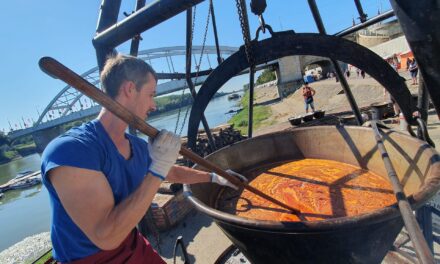Hungary's first bicycle bridge over the Danube, which will lead to the Szentendrei Island, has received a construction permit. The anchored suspension bridge will lead between Kisoroszi and Dunabogdány.
The investor Nemzeti Infrastruktura Fejlsztő Zrt. entrusted Speciálterv Építőjenőgi Kft. with the full-scale design work of the Danube branch bridge and related road network . During the planning, it was necessary to reconsider the study plans to give an optimal proposal for the bridge of the Danube branch in Szentendre and to obtain the construction permit by conducting the necessary environmental consultations and procedures, and then to prepare the construction plans based on that.
Previous study plans examined the possibility of a bridge structure and crossing with the least environmental disturbance at several locations. As a result of consultations with the affected settlements, as well as with environmental protection and water specialists, a trail running along the path of Hajós Street on the Kisorosz side, and connecting to the bridgehead created using the waterworks area on the Dunabogdány side, was selected.
In the design of the bridge structure, the expectations were to fit into the landscape, transparency and lightness, in addition to economic aspects. The engineers of the Special Plan finally proposed self-anchored suspension bridge
Gábor Pál, the designer of the bridge, said that this bridge structure is a member of a rare group of suspension bridges. The main cables of the classic suspension bridge are connected to an anchor block behind the bridge. Such a structure is the Elizabeth Bridge or the 1915 Çanakkale Bridge in Turkey, which was handed over in March and is considered a world record.
On the other hand, in the case of a self-anchored suspension bridge, the main cable is connected to the main support that forms the bridge track. The bridge looks identical to the classic suspension bridge, but the design has many advantages. The most important thing is that the anchoring block can be avoided, which significantly reduces the amount of substructures of the bridge and thus its costs. On site, the fact that the smaller substructure results in less environmental disturbance is also a major advantage.
You can read the entire article on the Magyarepitok.hu website
Scenic plan: Specialterv Kft.













